8 Tips for Making the Most of Dramatic Play
March 12, 2024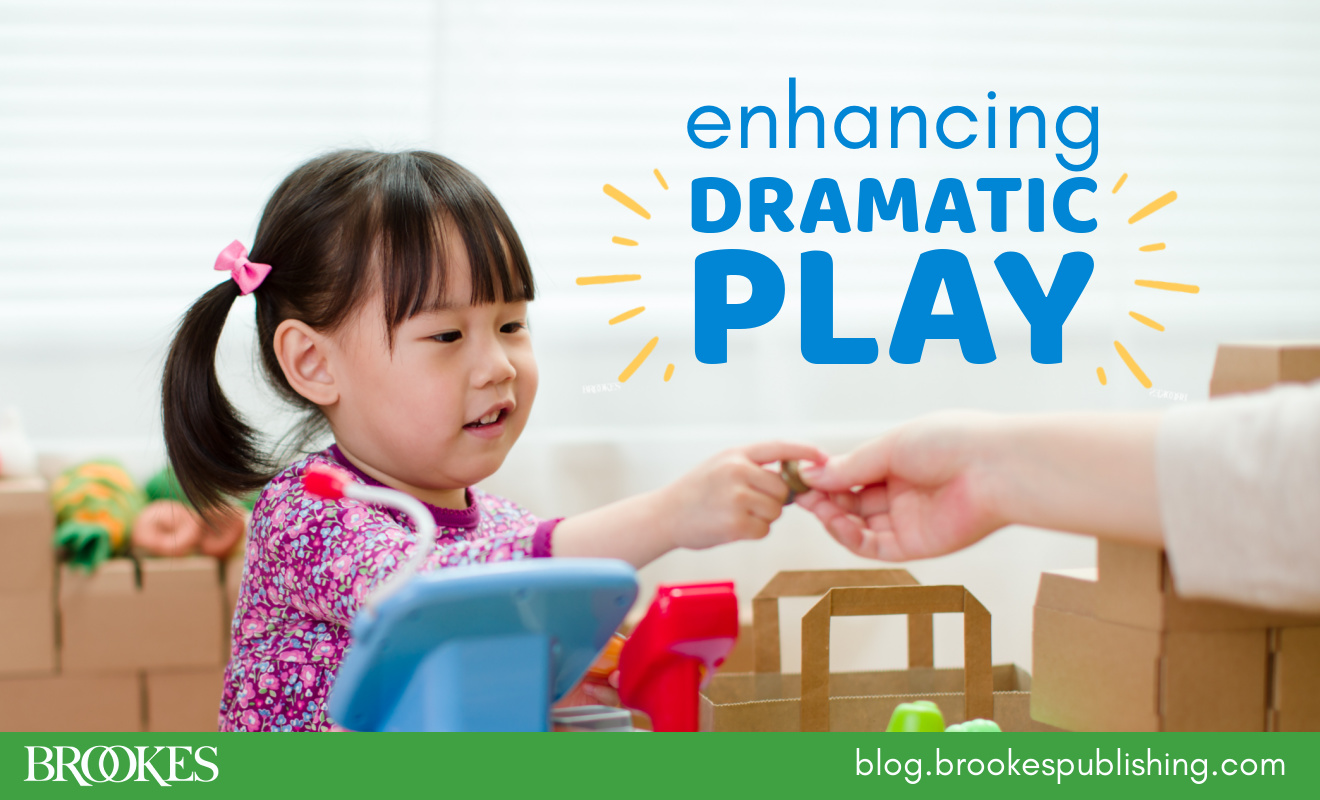
Dramatic play is a great way for young children to practice many critical skills: communication, cooperation, motor skills, emerging literacy skills, and more. In today’s post, we’re sharing some universal strategies for making the most of dramatic play in your early childhood program.
 The tips in this post are adapted from Volume 5 of the tiered AEPS®-3 Curriculum—the “Ready” level, which encompasses more complex developmental and early academic skills. At the Ready level, adult–child interactions during dramatic play can be minimal, since this is a child-led routine. But adults still play an important part in teaching expectations and setting the stage for fun and learning. Here are 8 tips to keep in mind:
The tips in this post are adapted from Volume 5 of the tiered AEPS®-3 Curriculum—the “Ready” level, which encompasses more complex developmental and early academic skills. At the Ready level, adult–child interactions during dramatic play can be minimal, since this is a child-led routine. But adults still play an important part in teaching expectations and setting the stage for fun and learning. Here are 8 tips to keep in mind:
 Use dramatic play to reinforce a theme. Set up a dramatic play area based on your current classroom theme or the current season. For example, you might set up a doctor’s office when talking about community helpers, an airport when talking about transportation, or a hot chocolate stand during winter.
Use dramatic play to reinforce a theme. Set up a dramatic play area based on your current classroom theme or the current season. For example, you might set up a doctor’s office when talking about community helpers, an airport when talking about transportation, or a hot chocolate stand during winter.
Diversify your dramatic play. Make sure your play items represent diverse groups of people. Incorporate foods from different cultures, include clothing from different countries and occupations, and offer items that represent various disabilities (dolls with cochlear implants or glasses, adapted eating utensils, old walkers or leg braces).
 Offer a wide variety of play materials. Consider including dramatic play items such as kitchen sets and pretend food, dolls and baby items (bottles, diapers, clothes), dress-up clothes, old cell phones, cash registers, doctor and veterinary kits, play money, and writing implements and paper (order pads, menus, receipt books).
Offer a wide variety of play materials. Consider including dramatic play items such as kitchen sets and pretend food, dolls and baby items (bottles, diapers, clothes), dress-up clothes, old cell phones, cash registers, doctor and veterinary kits, play money, and writing implements and paper (order pads, menus, receipt books).
Rotate materials often. To encourage dramatic play, provide materials that children are interested in. Be sure to rotate the play materials when children lose interest in them. Items don’t have to be new. Seek out a variety of sources for play materials, including items purchased at garage sales and thrift stores, old items from around the house, and materials created with cardboard or wood. (Remember to review all materials for safety.)
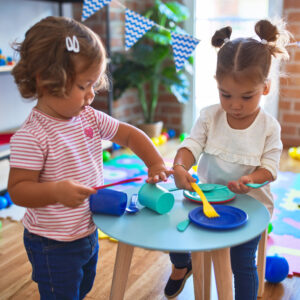 Encourage problem-solving. Teach ways children can solve problems on their own. Say things like, “You have all the crackers. Can you share some with your friend so you both have the same number of crackers?” or “Next time you can say to your friend, ‘This one is my doll, but you can have this other doll.’”
Encourage problem-solving. Teach ways children can solve problems on their own. Say things like, “You have all the crackers. Can you share some with your friend so you both have the same number of crackers?” or “Next time you can say to your friend, ‘This one is my doll, but you can have this other doll.’”
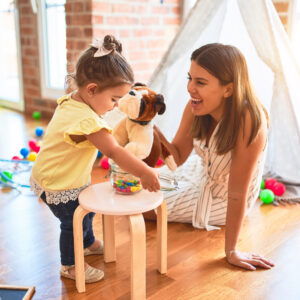 Look for opportunities to enhance language skills. Use dramatic play as an opportunity to expand on children’s vocabulary. Listen to children as they converse, notice whether they are using correct verb tenses and pronouns, model correct grammar for them, and ask them to repeat after you. Show them how to use words to play together describe their feelings as they work out conflicts.
Look for opportunities to enhance language skills. Use dramatic play as an opportunity to expand on children’s vocabulary. Listen to children as they converse, notice whether they are using correct verb tenses and pronouns, model correct grammar for them, and ask them to repeat after you. Show them how to use words to play together describe their feelings as they work out conflicts.
Give kids time to work out conflicts—but provide support if needed. Allow extra wait time when children have a verbal disagreement during dramatic play, to give them an opportunity to solve their own problems without adult assistance first—for example, sharing a popular toy that everyone wants to play with. If children need support to resolve conflicts like these, use a timer to limit the amount of time each child can play with the disputed toy.
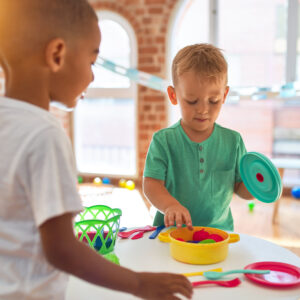 Praise children for positive behavior. Give immediate, specific praise when you witness children doing things they are supposed to do during dramatic play, such as cooperating, picking up toys already used before starting to play with other toys, and resolving conflicts.
Praise children for positive behavior. Give immediate, specific praise when you witness children doing things they are supposed to do during dramatic play, such as cooperating, picking up toys already used before starting to play with other toys, and resolving conflicts.
Try the tips in this post to make dramatic play a fun and enriching activity for all young learners. And explore the updated website to learn more about AEPS-3—a seamlessly linked assessment and curriculum system that gives early childhood programs the most accurate, useful child data and a proven way to turn data into effective action.


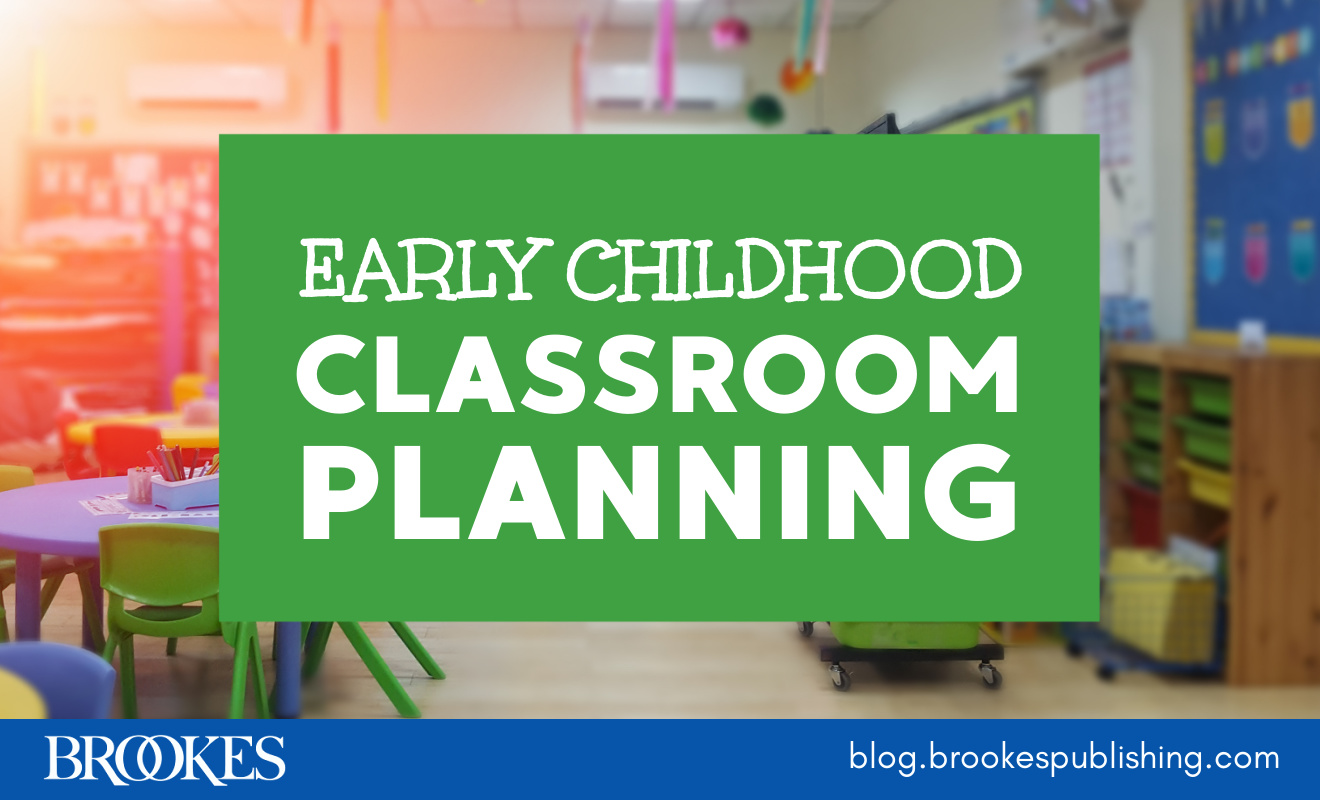

Write a Comment
Your email address will not be published. Required fields are marked *
Post a Comment